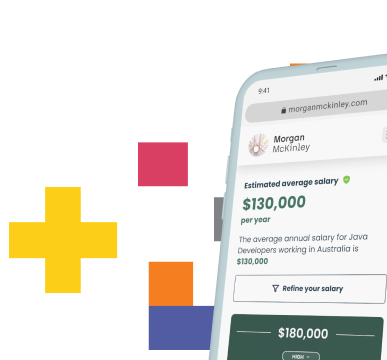Efficient ways to reviewing resumes

You’ve advertised a job vacancy. It’s a great role and your business is clearly alluring for job seekers; the advert has attracted a significant amount of applications. Now you need to identify which of those applicants you want to progress and interview. When choosing the best candidates to interview, the first port of call is to review their CVs. But when your vacancy has received lots of attention, this can become a mammoth task.
When hiring new talent, you should quickly and easily scan a CV or review a LinkedIn profile to pick out the exact information that meets your requirements, enabling you to separate the more eligible candidates from those who are not quite as qualified. You have to be careful - there are a number of things you can easily overlook which can increase the risk of making a bad hire and subsequently send negative ripple effects throughout the business.
You should be able to fairly compare the qualifications and personal traits of your applicants, recognising the potential red flags whilst identifying the more promising candidates. We have outlined 6 steps of pre-interview screening that should always be completed when choosing the candidates you wish to proceed with.
- Step 1: Identify the applicants who aren’t qualified for the role
- Step 2: The best way to review CVs
- Step 3: Potential red flags to look out for when reviewing resumes
- Step 4: What to look out for on their LinkedIn profiles
- Step 5: Pre-screening candidates over the phone
- Step 6: Why it’s important to be aware of the current hiring market
1. Identifying candidates who aren’t qualified
It’s almost inevitable that you will receive a number of speculative applications from people who simply aren’t qualified for the role.
As reported by Glassdoor, most corporate job opportunities attract roughly 250 resumes and from that large pool, only a handful will make it through to the interview stage.
A great way of being able to identify the candidates who aren’t quite up to the technical standard you require is to create a CV checklist of the absolute minimum requirements that they must have on their CV - most logically around skills, experience and education.
Any CV that doesn’t hit the mark can go straight into the ‘No’ pile, those that have potential but don’t meet all requirements can be noted as ‘Maybe’ and the CVs which meet all your criteria will go to the ‘Yes’ pile. This will give you a clear indication of how many people are eligible - making the next stage of the selection process a lot easier and less time consuming.
Further to your CV checklist, it can pay to skim the resumes for any keywords associated with the job description you created. Recent research has revealed that recruiters initially skim-read a CV in 6 seconds - could you identify the key aspects of an applicant’s CV at that speed?
If there are matches in the words used, it suggests that they have actively tailored their CV for the specific vacancy. If the CV just feels a bit generic, there is a chance they have been speculatively applying to multiple openings and that could be a reflection of their poor attention to detail or lack of full dedication to the task at hand.
Note: It’s important for your employer branding that you respond to all applicants who do not fit your criteria. Send them an email to thank them for their interest but let them know that, unfortunately, their application has been unsuccessful.
2. Reviewing resumes of applicants
Viewing a CV is often the first introduction you will have to a prospective employee. It should offer a clear overview of the applicant’s skills, previous experience and relevant qualifications amongst other things. It is an age old cliché, but first impressions really do count - the CV of someone you want to hire needs to be good!
Scanning the CV will help you obtain a general impression of the applicant; it’s surprising just how much you can gather about an individual from that initial review. There are 5 general categories to keep in mind when reviewing resumes of your applicants...
Impact - Does the candidate come across well with correct spelling and grammar throughout their CV? Any easily avoidable errors display a lack of attention to detail which could become a liability if you employ them.
Their key career accomplishments should take pride of place on the document and they should emphasise the skills that are most relevant to the job description. It’s even better if they don’t just tell you what they are good at, but they show you - clear examples, using data and figures, showing how they have added value in past roles are hugely impactful.
Brevity - A clear and concise CV is always going to be looked on more favourably than a long, waffling one; time is precious and you won’t want to read through irrelevant information. A hobby that requires relevant skills shows that the candidate has extracurricular talents but it’s a fine line - if they over-emphasise personal interests and include inappropriate information, they may be trying to fill the space and distract you from something that they are lacking. More often than not, two sides of A4 is ample space.
Structure - Applicants should do as much as possible to make it easy for hiring managers or decision makers to conclude they are a strong candidate and a good fit for the role. There should be clear titles to indicate different sections - Contact information, Past experience, Education, Personal profile and Skills - simple is best!
Style - Is it easily readable and formatted well? Does it meet stylistic guidelines relevant to the role or industry? If it does, this displays that the candidate understands the market - for example, it would be odd for an accountant to have a colourful, bold CV! Have they used a standard font like Arial, Tahoma or Times New Roman, or have they used something else which makes it more difficult to read?
Top quality candidates will understand that their CV should be uncluttered without too much unnecessary formatting.
Soft Skills - Do they mention keywords associated with soft skills such as time management, conflict resolution, creative thinking and networking ability? These are the sort of interpersonal skills you should be looking out for in any employee. Regardless of the seniority of the role, it’s important that they can work well in a team environment! If the role is a senior position, do they showcase the necessary leadership experience and skills?
3. Potential red flags to look out for on applicants’ resumes
So you’ve managed to whittle down your applicants by reviewing their CVs. You now have a more refined selection of individuals. But even if they seem to meet your stringent requirements, there are certain warning signs of potential problems that may outweigh a candidate’s abilities and experience.
- Look out for any unexplained gaps in their employment history - if they avoid using specific dates and just mention the year, it’s likely that they are trying to draw attention away from the fact that they had a long break between jobs. If you do decide that they are a strong candidate and decide to progress them, remember to bring up any gaps in their job history during the interview - it deserves a thorough explanation!
- Be wary of frequent movement between jobs - whilst job hopping is relatively commonplace nowadays and is often seen as a sign of an ambitious professional, leaving and starting at multiple new employers in a short period of time could indicate a lack of commitment. You may want to be wary of hiring someone who has a track record of job hopping - after committing so much time and effort to the hiring process, you’d be enormously annoyed and disappointed if they were to move on shortly after starting.
- While it may seem slightly contradictory to the previous point, a static career could also raise a red flag. If their CV displays no progression in responsibilities or advancement within a role, it could suggest a lack of appetite for career development.
- The use of ambiguous language may indicate that the candidate is attempting to hide their lack of experience or specific knowledge. Jargon and certain buzzwords may make them sound smart, but could be a cover up for a paucity of expertise.
4. Checking on applicants’ LinkedIn profiles
87% of recruiters use LinkedIn to find out more about candidates - so you should too!
Visiting their LinkedIn profiles is an excellent way you can learn a bit more about your applicants. It can even be as simple as how they use LinkedIn - it’s a professional social media platform, so how they act; the posts they like, the people or organisations they follow etc. all paint a picture of who they are. If they use profanities or suspect language in their posts or when commenting, they may not be as professionally minded as you first thought.
Another good indication of the candidate can be how much they shout about their key professional achievements.
Someone who takes pride in their work will blow their own trumpet at every opportunity and LinkedIn is the primary platform for this! This is important as it actually highlights what they have achieved, rather than just the type of person they are. Furthermore, do they have recommendations and endorsements from other professionals? If they do, it essentially acts like a review of a product or service - other people’s perceptions add highly valuable credibility.
Past experience, qualifications, skills and achievements they outline on LinkedIn should match up to the CV you’ve reviewed and be aligned directly with what you are looking for.
5. Pre-screening remaining candidates over the phone
Once you’ve been through the steps above, you may want to pre-screen the remaining candidates before inviting them to interview. An easy way to learn a bit more about your applicants is over a quick phone call.
This method is beneficial as you get a much better understanding of their communication skills, sense of humour, ability to listen and professionalism - all crucial considerations, especially in terms of cultural fit, that cannot easily be ascertained from reading their CV.
A typical pre-screening telephone call should last about half an hour and could include questions that help you identify those who could be a stronger match for the set-up of the team. Some questions you may want to ask on the call include:
- Is the salary for this position within your acceptable range?
- Why are you searching for a new position?
- What was your motivation for applying to this vacancy?
- What are the top three duties in your current or most recent job?
- What do you see as your strongest skills, and what are your weakest traits?
6. Be aware of the current hiring market when reviewing candidates
Whilst it is the final item on our article, that does not mean it is the least important. You should always be aware of what is going on in the current hiring market when you are looking to fill a vacancy. There are so many external factors that could contribute towards the type of applicants you receive, so it’s important to be mindful of that.
It can be difficult to sift through heaps of CVs and can become frustrating if you don’t come across any applicants that quite hit the mark. You should always remember that, regardless of how great the opportunity is and how attractive your organisation may be for job seekers, there is a real chance that the perfect candidate simply may not be out there! With that in mind, it’s important that you don’t just set out to hire the ‘dream candidate’, but hire for potential as well.
If they are the perfect fit culturally, technical skills can often be improved by on-the-job training.
Reviewing CVs and vetting applicants can feel like a daunting task, but it’s one that you should take a lot of care and time over - don’t lose sight of the little things. After all, it is often the smaller things that make the biggest difference down the road. Being lackadaisical could be the difference between adding a great new team member and having to start the entire hiring process again from scratch after a couple months.














